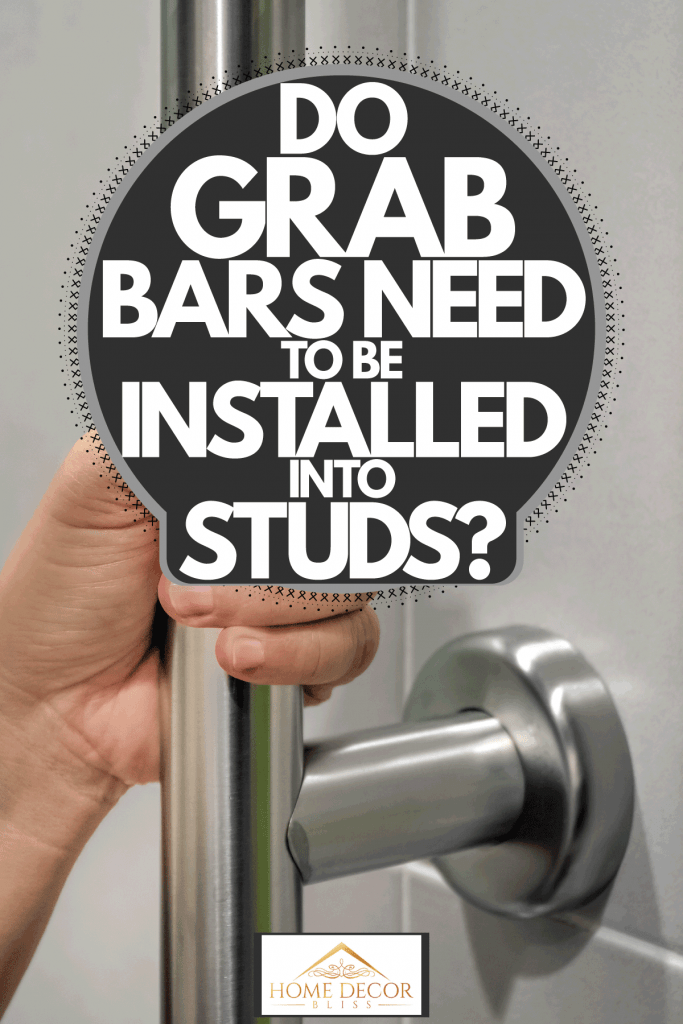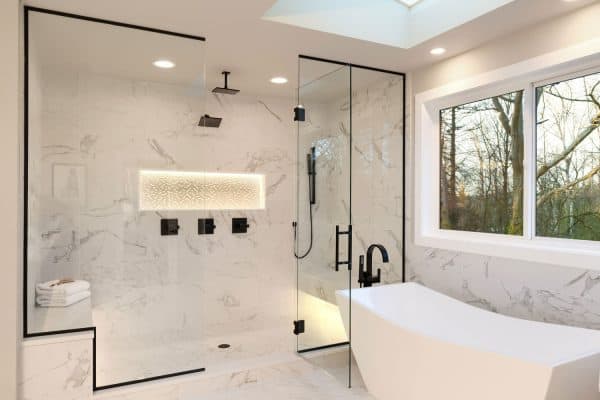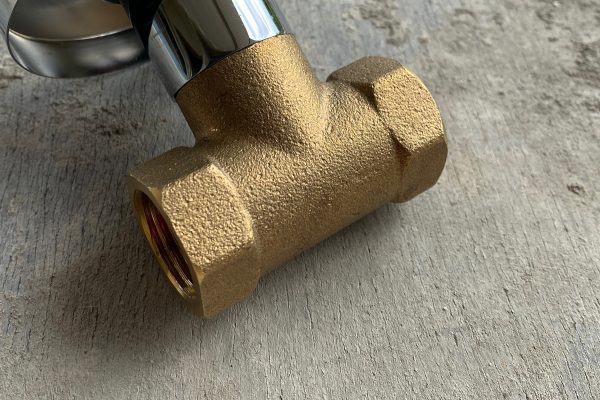Getting in and out of areas in the bathroom can be challenging for some, especially when things are wet. If you're looking to install grab bars for safety, you might be wondering if they'll need to be installed into the wall studs. We've taken a look and pulled together the answers for you!
Grab bars are highly recommended to be installed into wall studs to ensure the security of the bar. There are other methods to install them just in case you don't know where your studs are. Wall anchors can be used in place and will provide a secure grounding for the installation, even with tile walls.
Often elderly individuals or those with a disability need an extra hand in these private situations. Adding grab bars on the walls, near the shower and toilet, will allow these individuals to regain some independence. Keep reading for instructions on properly installing grab bars into drywall without studs and through tile walls.

Know Before You Install
- the grab bar
- stud finder
- leveler
- power drill
- drill bits for the appropriate surface
- screws
- wall anchors
- pen or pencil
- masking tape
- silicone caulk
- eye protection
Having your tools and area prepped beforehand will save you the time and effort it takes to look for them elsewhere. This project could take between two and three hours to complete and should be double-checked before usage.
Click here to view these Masonry Drill Bits on Amazon.
Grab Bar Specifications
The ADA, or Americans with Disabilities Act of 1990, set out standards in Section 609 on how buildings should install grab bars. If you're in an apartment, make sure the current bars are up to code and, if not, how to fix them. Grab bars require a minimum weight holding of 250 lbs to encompass all types of individuals and should not wiggle once installed. Bars must also not create any sort of blockage of clear walking space, which could lead to a safety hazard.
How do you install grab bars without studs?
Before taking all the parts and packaging off, does your grab bar fit in the designated area? Line up the ends of the bar to the wall and see how it'll fit into the space. Bathrooms often are lined with cement backing and can make it hard to find studs even with a stud finder. Drywall anchors are a great solution for better stability. These inserts have a better grip on a drywall than just the screw alone. Some store-bought bar packages will already have anchors in them; use those instead of buying others.
Click here to view these wall anchors on Amazon.
How do you install grab bars on tile walls?
To begin, put down masking or painter's tape where you want to drill into the wall. Hold the exposed screw openings of the bar to the tape and mark with a pen where each hole is. The tape will help reduce slippage that could scratch your tile. Using either a diamond or masonry drill bit, make incisions on the premade marks. It is very important to remember to use a bit smaller than the screws; otherwise, the screw won't fully touch the surface.
To be safe, you can drill about one-eighth into the tile and then switch to a drill bit for wood/drywall once you break through. Making pilot holes first will save you from trying to keep the thin pointed screw steady. Insert your anchors, hammer, or drill in lightly. Repeat this with the other end of the bar. Then, align the bar to the holes and drill or screw in the rest of the hardware.
Use silicone caulk to line the edges of the flanges; this will prevent water from penetrating behind it and reducing the chance of mold. Let the caulk dry for about two hours before giving it a good weight test. Then allow a 24 hour curing time before you get it wet.
What is the standard height for a grab bar?
According to the ADA, a horizontal grab bar should be at a minimum of 33 inches to a maximum of 36 inches above the floor to the top of the bar. If the bar goes above a toilet, it will still go up to 36 inches, but one end sticks out farther past where the toilet ends; this is called the controlled wall end. There is an exception for private properties with specific needs.
Bars can be slightly adjusted to work best for the individual using the room. If someone has a hard time balancing while looking up, a lower bar to hold onto could assist them better. Grip bars should never stick out farther than 1.5 inches; any more distance might leave room for an arm or clothing to get caught in.

Should grab bars be vertical or horizontal?
The direction of the grab bars will depend on where you are installing them. For sidewalls, you'll want to install horizontal bars. These are good for pulling yourself up from a sitting position and having a level surface for balance.
Vertical bars are best to be placed at the entrance of the shower. It covers less walking distance but is a good option for smaller spaces. You can also install diagonal grip bars near toilets or near seats in a shower. This type of bar is the most useful for going from a sitting position to a standing position.
How many grab bars should be in a shower?
A typical number of grab bars inside a shower is three and can be of different sizes and directions. One will always need to be on the control wall, which is the longest sidewall. You can put two bars if you have a tub, one placed nine to 11 inches from the top of the tub and another at the standard 33 to 36 inches above the tub. Having both breaks up the strain of lifting one's self all the way up at once.
Then you can put a vertical bar near the faucets as an entrance grip. Keep in mind the bar should not be blocking the faucets or be too close to any shower cords. If more grips are needed, you can install smaller bars at the needed points of use. An example would be near a folding or permanent seat in the shower where someone might need assistance specific to their needs.
Click here to view this grab bar on Amazon.
Are suction grab bars safe?
In terms of supporting full body weight, no, suction grab bars are not safe. Across most brands for sale, the packaging will say that balancing support cannot support a person's full weight. Due to this fact, it is not ADA approved since it doesn't hold a minimum of 250 lbs. If you have a smooth and flat surface, and you just need a balancing bar, it will work just fine.
In Closing
Grab bars are at their most secure when installed into studs. However, you can use wall anchors as an alternative if you can't find them or have tile walls. Your bar will sit 33 to 36 inches high, and you usually have up to three bars in the shower. While suction cup bars may not be safe for your full weight, they are useful for quick balance situations.




![Marble walled shower wall, 5 Best Types Of Shower Wall Panels To Consider For Your Bathroom Renovation [The Ultimate Guide]](https://homedecorbliss.com/wp-content/uploads/2023/07/shutterstock_2138160219-600x400.jpg)

